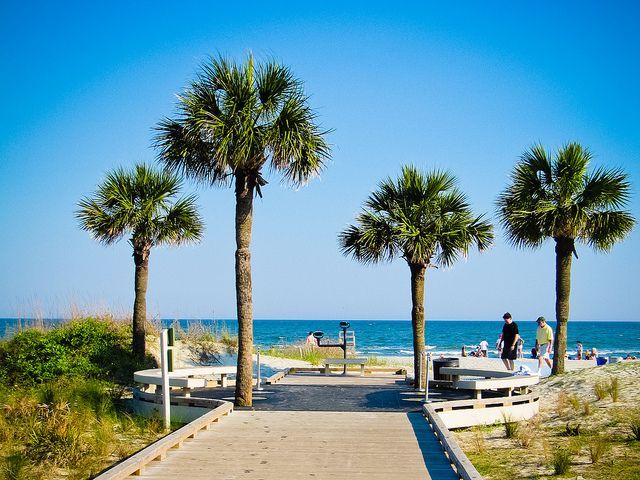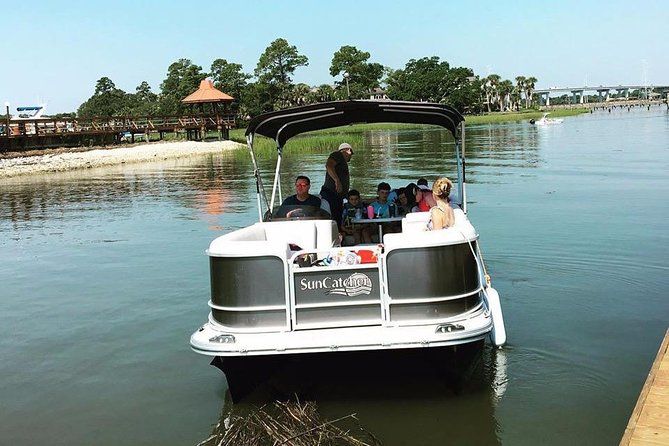222 Capitol Street, Suite 522
Charleston, WV 25301

History Of Hilton Head, South Carolina
Its natural beauty led to the transformation of Hilton Head from an isolated backwater to a world-famous resort and recreational community during the second half of the twentieth century.
(Beaufort County; 2000 pop. 33,862). Located in the southeast corner of the state, Hilton Head Island is the largest of the islands that flank South Carolina’s Atlantic coast. Its natural beauty led to the transformation of Hilton Head from an isolated backwater to a world-famous resort and recreational community during the second half of the twentieth
century.
Landmarks

Hilton Head Island Bike Trails
Write your caption hereButton
Coligny Beach
Write your caption hereButton
4-Hour Private Hilton Head Pontoon Boat Rental
Write your caption hereButton
History and Timeline of Hilton Head Island
The following information and photographs were provided by the Coastal Discovery Museum and the Town of Hilton Head Island. The Museum gathered some of the information for the time line from Town residents and long-time Islanders.
Native American Occupation 8000 B.C. – 1500 A.D.
8000 B.C. – 1000 B.C. – Archaic Period Native Americans visited this area seasonally.
1335 A.D. Green’s Shell Enclosure, a 4-foot-tall shell ridge that encloses 2 acres, was built along the banks of Skull Creek.
European Explorers 1500 – 1700
1521 – A Spanish expedition, led by Francisco Cordillo, explored this area, initiating European contact with local tribes.
1663 – Capt. William Hilton sailed from Barbados, on the Adventure, to explore lands granted by King Charles II to the eight Lords Proprietors. Hilton Head Island takes its name from a headland near the entrance to Port Royal Sound.
1698 – John Bayley, of Ireland, was given most of Hilton Head Island as a barony. Twenty-four years later, his son appointed Alexander Trench as his agent in charge of selling the land. For a short time, Hilton Head was called Trench’s Island on some 18th century maps.
Plantation Era 1700 – 1860
1711 – Beaufort, South Carolina was founded.
1760s – Beaufort County’s shipbuilding industry was one of the largest in the 13 colonies. The deep-water creeks around Hilton Head and the prevalence of hardwoods (like live oak) made the island a popular place for shipbuilding. The USS Constitution, “Old Ironsides,” was rebuilt in 1997 using live oaks felled during construction of Hilton Head Island’s Cross Island Parkway.
1779 – Privateers sailing with the British navy burned many houses on Skull Creek and around the island on their way to Beaufort and Charleston. Hilton Head residents tended to be Patriots, while Daufuskie residents were Tories.
1780 – Daufuskie Islanders burned several Hilton Head homes, including the Talbird home.
1788 – The Zion Chapel of Ease, a small wooden Episcopal church for plantation owners was constructed. All that remains is the cemetery, home to the Baynard Mausoleum, near Mathews Drive.
1790 – William Elliott II, of Myrtle Bank Plantation, grew the first successful crop of long-staple, or Sea Island, cotton in South Carolina on Hilton Head Island.
1813 – During the War of 1812, British forces landed on Hilton Head Island, burning many of the houses along Skull Creek.
1860 – There were more than 20 working plantations on the island before the Civil War. Most plantation owners did not live on Hilton Head. The island was populated with slaves and overseers.
The Civil War and the Union Occupation 1860 – 1865
1861 – Beginning in July, Fort Walker was built on Hilton Head Island at the entrance to Port Royal Sound in Order to protect the port from Union attacks.
1861 – On November 7th, Union forces attacked Fort Walker (later renamed Fort Welles in honor of Gideon Welles, secretary of the Navy) and Fort Beauregard in the Battle of Port Royal. Nearly 13,000 Union troops flooded onto the island in the days after the battle.
1862 – Hilton Head Island was also referred to as Port Royal, in reference to the Port Royal military installation. Port Royal was the home to the Department of the South.
1862 – Hilton Head’s population swelled to over 40,000, including Union troops, civilian store-keepers, missionaries, prisoners of war, and slaves seeking refuge from their owners.
One of the oldest structures on the island, the Queen Chapel, A.M.E. Church is located on Beach City Road. African Methodist-Episcopal missionaries founded the Queen Chapel in 1865. The original building has been a praise house used by slaves on the Pope plantation. The structure was updated in 1892 and 1952.1862 – Gen. Ormsby Mitchel set up the town of Mitchelville to house the island’s first freedman’s village. Mitchelville residents elected their own officials, passed their own laws, and established the first compulsory education law in the state. The Mitchelville community was built along modern-day Beach City Road.
1862 – Fort Mitchel was built as a battery to protect Skull Creek from Confederate attacks. Fort Sherman, which circled the military installation, was completed.
1865 – The First African Baptist Church was founded in August. Several island churches formed out of this church, including St. James, Goodwill, Central Oakgrove, and Mt. Calvary.
Reconstruction and Isolation 1870s – 1940s
1949 – A group of lumber associates from Hinesville, Georgia, bought a total of 20,000 acres of pine forest on Hilton Head’s southern end for an average of nearly $60 an acre. They formed The Hilton Head Company to handle the timber operation. The associates were Gen. Joseph B. Fraser, Fred C. Hack, Olin T. McIntosh, and C.C. Stebbins.
1950 – Logging took place on 19,000 acres of the island. There were three lumbermills built to harvest the timber. The island population was only 300 residents.
1950 – The first electricity was brought to the island by Palmetto Electric Cooperative.
1953 – A state-operated car ferry began running from Buckingham Landing (near Bluffton, on the mainland) to Jenkins Island (at Outdoor Resorts).
1954 – Hilton Head Elementary School opened for the island’s black students. Isaac Wilborn was the principal of the elementary school from 1954 until it closed in 1974. The school was replaced by a new integrated school constructed on a new site in 1975.
1955 – Beaufort County state representative Wilton Graves opened the Sea Crest Motel on Forest Beach. At first, it consisted of two rooms. The first vacation cottages were developed on Folly Field Road.
1955 – Coligny Shopping Plaza is established.
The J. Byrnes Bridge opened on May 20, 1956. This was the first bridge connecting Hilton Head to the mainland. The cost was $1.5 million. At first, the bridge cost $2.50 per round trip. The toll was phased out by 1959. The Byrnes Bridge was a swing bridge. It swung open to allow boats to pass through on either side of the center support.1956 – James F. Byrnes Bridge, a two-lane toll swing bridge, was constructed at a cost of $1.5 million. This opened the island to automobile traffic from the mainland. This year, forty-eight thousand cars traveled across the bridge. The toll was discontinued in December 1959.
1956 – Charles E. Fraser, bought his father’s interest in The Hilton Head Company and began developing it into Sea Pines Plantation.
1956 – Norris and Lois Richardson opened the first supermarket on the island, located near Coligny Circle in the North Forest Beach area.
1956 – The Hilton Head Island Chamber of Commerce was established.
1958 – First deed to a lot in Sea Pines Plantation was signed. Beachfront lots initially sold for $5,350. By 1962, they were selling for $9,600.
1958 – Telephone service was offered by Hargray Telephone Company. The first Hilton Head office did not open until 1960.
1958 – Palmetto Bay Marina opened.
1960 – The island’s first golf course, the Ocean Course, designed by George Cobb, was built in Sea Pines Plantation.
1961 – The McIntosh family subdivided 360 acres of The Hilton Head Company to start Spanish Wells.
1962 – Port Royal Plantation was developed by Hilton Head Company, led by Fred Hack.
1965 – The Sea Pines Medical Center was built. It was staffed by a retired doctor who lived in Sea Pines but served the entire island community.
1965 – Hilton Head Island had its first rural mail route established.
1967 – Sea Pines Plantation installed the island’s first gates.
1967 – The Palmetto Dunes area was acquired from the Hilton Head Agricultural Company by Palmetto Dunes Corporation, headed by William T. Gregory, for $1,000 per acre.
1967 – The Hilton Head Airport opened.
1969 – Harbour Town village was completed. The full-time population of the island was 2,500.
1969 – The first Heritage Golf Classic played at Sea Pine’s Harbour Town Links.
1970 – Island Packet newspaper was first published.
1970 – The Hilton Head Company started Shipyard Plantation.
1971 – Sea Pines acquired land on the north end of the island, which was developed into Hilton Head Plantation.
1974 – The swing-bridge was struck by a barge which force island residents to travel off the island on a pontoon bridge constructed by the Army Corps of Engineers. The bridge was closed for six weeks.
1975 – The island’s full-time population by this time was 6,500. Over 250,000 visitors came to Hilton Head.
1975 -Hilton Head Hospital was completed.
1979 – Hurricane David missed the island, but high winds left beached eroded and destroyed several Singleton Beach homes.
1982 – A four-lane bridge was built to replace the two-lane swing-bridge to the island. The island’s full-time population was 12,500. More than 500,000 visitors came to Hilton Head in 1982.
1982 – Wexford Plantation and Long Cove Club were developed.
1983 – The Town of Hilton Head Island incorporated as a municipality.
1985 – Hilton Head Island’s Comprehensive Plan was adopted by the Town Council and Council adopted new Comprehensive Plans (1991, 1999, 2004, 2010, 2012).
1985 – The population was over 17,000 full-time residents.
1987 – The Town Council adopted the Land Management Ordinance (LMO), including the first sign ordinance and first tree protection ordinance.
1988 – Purchased 5 acres for Coligny Beach Park (1989) and parking lot.
1989 – The concept of a Cross Island Parkway is approved. The Parkway’s bridge spans Broad Creek and links the south end of the island to the north end.
1989 – Adopted Road Impact Fee Program, first in the state.
1989 – Purchased 1 acre for the Folly Field Beach Park (1991).
1989 – Town received its first Comprehensive Annual Financial Report Award and has received the award every year since.
1989 – 1st Pathway project (William Hilton Parkway-Sea Pines Circle to Palmetto Dunes).
1990 – 1st Beach Renourishment project (Atlantic Shorefront Fill Project).
1990 – Real Estate Transfer Fee is adopted and takes effect January 1, 1991.
1991 – The Growth Management Task Force is created.
1992 – The Municipal Court is created.
1992 – Purchased 16 acres for the Islanders Beach Park (1998).
1992 – Purchased 14 acres and in 1993, purchased 1 acres for the Driessen Family Beach Park (1995)
1992 – The existing Town Hall opened on 13 acres along William Hilton Parkway.
1992 – Purchased 85 acres, the first acquisition under the Town’s new Land Banking Program, for the first recreational facility, the Crossings Park (1996), and Bristol Sports Arena (1997).
1992 – Purchased 65 acres of the North Ridge Tract for the Beaufort County Library (1998) and Volunteers in Medicine location (1993) and placed a conservation easement on a portion of property to
protect from further development.
1993 – The Beach Preservation Fee is adopted and is the first dedicated local funding source for beach renourishment in the state.
1993 – State Supreme Court upholds constitutionality of Real Estate Transfer Fee and concept of home rule.
1993 – The Sea Pines/ Forest Beach Public Service District, the Hilton Head Island Fire District and the non-profit Hilton Head Rescue Squad merge to form the Town of Hilton Head Island Fire & Rescue Department.
1993 – 1st major road improvement project (New Orleans Road Rehabilitation).
1994 – Traffic Light Synchronization began.
1994 – Pembroke Drive (partnership with Indigo Run) completed.
1995 – Adopted Island-wide stormwater management plan with over $20 million in identified projects.
1995 – Voters approve change from 2 year terms for Mayor and Council to staggered 4 year terms.
1995 -The permanent year-round population exceeded 28,000 people. The island had over 1.5 million visitors.
1995 – Purchased 67 acres for Chaplin Community Park (2001).
1995 – Construction on the Cross-Island Parkway began.
1996 – Purchased 53 acres for Jarvis Creek Community Park (2003).
1996 – Beach City Road Realignment.
1996 – The Master Land Use Plan for Ward One was started by the Town.
1997 – Atlantic Shorefront Fill Project (including Port Royal).
1997 – Paving of Leg O’ Mutton Road and Jonesville Road.
1997 – Town annexed a portion of Jenkins Island.
1997 – Cross Island Parkway opened in January. The total cost was $81 million for construction, land acquisition, and planning.
1998 – Repealed the LMO and replaced with a new streamlined LMO.
1998 – Purchased 17 acres for the Fish Haul Creek Park (2005).
1998 – Dual Route Phase I and Dual Route Phase II road projects (1999).
1999 – Tax Increment Financing Districts are created.
1999 – South Beach Fill Renourishment Project.
1999 – Purchased 26 acres for the Shelter Cove Community Park (2001).
A New Century
2000 – Census population is 33,862.
2000 – Jarvis Creek Pump Station and South Forest Beach Phase I and Phase 2 (2001) Drainage Projects.
2000 – Opened new Fire Station #3 at 534 William Hilton Parkway. 2001 – Purchased 3 acres for the Green Shell Park (2004).
2001 – Purchased 3 acres for Compass Rose Park (2008).
2001 – Purchased 18 acres for the Mitchelville Beach Park (2007).
2001 – Purchased 13 acres for the Barker Field Expansion Recreational area (2006).
2001 – The International Building Codes (IBC) and amendments are adopted, and the Town converts from Southern Building Code to IBC.
2002 – The Coastal Discovery Museum relocated to Honey Horn after multi-million dollar public-private renovation/restoration effort.
2002 – The Town’s Fire & Rescue received its 1st International Accreditation from the Commission on Fire Service Accreditation International and was the second in the state and the 53rd agency worldwide to be accredited.
2003 – Opened new Fire Station #7 at 1001 Marshland Road.
2004 – Powerline burial project began.
2004 – Even-year elections for the Mayor and Town Council are adopted.
2004 – North Forest Beach Wexford Pump Station and North Forest Beach Phase II Drainage Project completed.
2005 – The U.S. Census Bureau Population estimate is 34,855.
2005 – Opened new Fire Station #4 at 400 Squire Pope Road.
2006 – The Disaster Recovery Commission is created and completed its work in 2012.
2006 – Atlantic Shorefront Fill Project.
2007 – The Town’s Fire & Rescue received its 2nd International Accreditation from the Commission on Fire Service Accreditation International.
2007 – Office Park Road Realignment.
2007 – Pope Avenue pathway and boardwalks built.
2008 – Mathews Drive Corridor Improvements (roadway, pathway, drainage).
2009 – Coligny Beach Park Renovation is completed.
2009 – Opened the new Fire & Rescue Training Center at Dillon Road.
2009 – Opened the new Facilities Management Building at Gateway Circle.
2010 – Census population is 37,099.
2010 – The Town supported the Heritage Golf Tournament in year 2011 with a $1 million commitment.
2011 – Stormwater Utility is created countywide with significant Town leadership in the creation.
2011 – The Town committed funds for advertising to secure the RBC Heritage from 2012 to 2016.
2011 – LMO Rewrite Committee formed.
2011 – Opened new Fire Station #5 at 20 Whooping Crane Way.
2011 – Port Royal Sound Shoreline Rehabilitation completed.
2012 – Major changes to streamline the LMO permitting process.
2012 – Town/Shelter Cove Town Center, LLC Developer Agreement for the redevelopment of the Mall at Shelter Cove is approved.
2012 – Town purchased a 23,500 square foot building on Shelter Cove Lane for the Beaufort County Sheriff’s Office Island location.
2012 – The Town’s Fire & Rescue received its 3rd International Accreditation from the Commission on Fire Service Accreditation International.
2012 – The Town’s Fire & Rescue received the Heart Safe Community Award from the International Fire Chief’s Association.
2013 – The Economic Development Corporation is created.
2013 – The former SHARE Center, now renamed the Hilton Head Island Senior Center, opens in expanded space at Shelter Cove Lane.
2013 – Opened new Fire Station #1 at 70 Cordillo Parkway.
2013 – Construction on new Fire Station #6 at the entrance to Palmetto Dune began.
2013 -Town celebrates its 30th Anniversary of Incorporation.
Hilton Head Island History & Heritage
Rich in Culture, Rich in Spirit
Incorporated as a town in 1983, Hilton Head Island is home to more than 40,000 residents who live year-round in our renowned environmentally planned resort and residential communities. Yet much of the Island remains as it was when sighted from William Hilton’s ship more than 350 years ago. Over the centuries, Hilton Head Island’s natural beauty, spectacular seascapes, exceptional ecology and South Carolina historical sites have beckoned generations of explorers—with Native Americans, English, Spanish, French colonists, pirates, African-Americans and soldiers all leaving their footprints on the sands of South Carolina’s Treasured Coast. And now is the time for you to leave your own footprints in the sand…on Hilton Head Island.
Overview from Travel and Leisure

Main Office
222 Capitol Street, Suite 522
Charleston, WV 25301
other offices
48 1/2 Second Ave, Williamson, WV 25661
20 Clinch Mountain Ave, Lebanon, VA 24266,
Contact
DIGITAL MARKETING SERVICES
All Rights Reserved | Ideation Digital
Private Policy
All Rights Reserved | Ideation Digital

